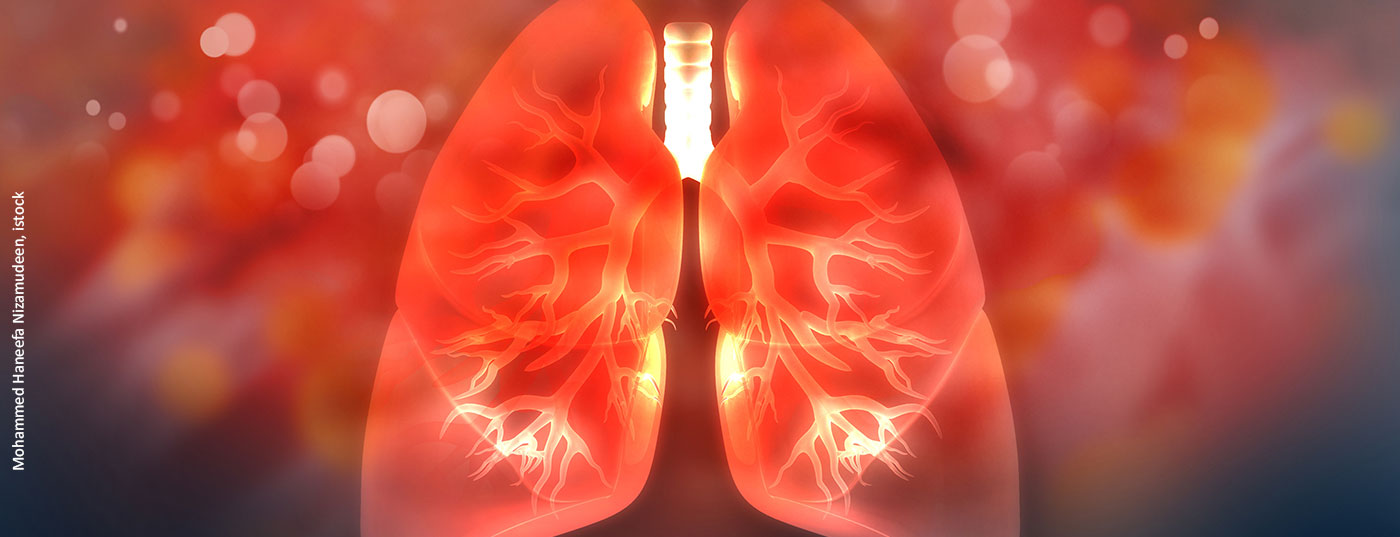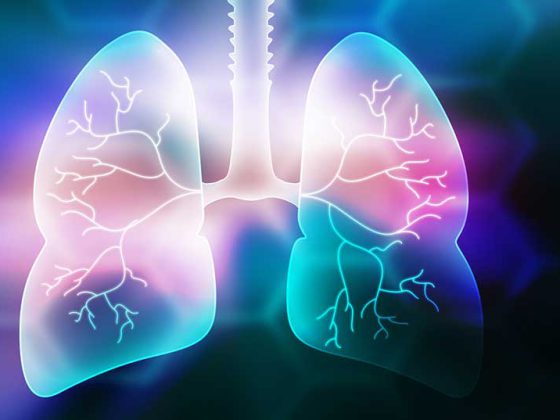2021, an update of the S3 guideline of the German Society of Pneumology and Respiratory Medicine (DGP) on community-acquired pneumonia was published, in which the Swiss Society of Pneumology (SGP) and the Swiss Society of Infectious Diseases (SGInf), among others, were also involved [1]. The main changes of the update were presented at DGIM. The most important innovation: the duration of therapy is becoming shorter and shorter.
In the inpatient setting, the diagnosis of pneumonia is basically not a problem. X-ray imaging and other diagnostic measures are available here. It becomes more difficult in the outpatient sector. Again, if pneumonia is clinically suspected, confirmation by thoracic imaging should be sought if possible (strong recommendation, evidence C). However, if this is not feasible (weekend, rural area), there are alternatives such as sonography of the thorax. However, this has the disadvantage that the depth of penetration is limited, explained Prof. Dr. Santiago Ewig, Thoraxzentrum Ruhrgebiet, Clinics for Pneumology and Infectiology, EVK Herne and Augusta-Kranken-Anstalt Bochum, citing further counter-arguments against the chest image: The milder the pneumonia, the less informative the thorax is, he said. Therefore, one must expect that despite imaging, the diagnosis will not always be made.
So how intensively should diagnostics be continued? First, of course, admission to the emergency room may be an option – “but that puts our patient back into other hands.” The second option is to administer antibiotics if there is a reasonable suspicion even without backup. “However, the burden of proof is no lower the next day. So what you couldn’t do on Friday or Saturday, you should then make up for on Monday,” says the lead author of the guideline. Short-term therapies are not excessively problematic in terms of adverse effects of antibiotics, he said.
Stratification
Clinical evaluation is validated by severity criteria of respiratory rate ≥30/min, blood pressure <90/≤60 mmHg, new onset of impaired consciousness, and-new-oxygen saturation ≤92%. The patient’s age, on the other hand, is not a factor, “because while it is a risk factor, it should not be a criterion for why we put someone in the hospital or not.” Also important: unstable comorbidity and chronic bedriddenness as individual risk factors.
If these criteria are not present, mild pneumonia can be assumed and treated without risk as an outpatient (provided there are no social contraindications). If ≥1 criterion, hospitalization usually occurs and further evaluation is required.
In the hospital, on the other hand, other factors have to be taken into account: Does the patient need to be monitored or in intensive care? There are three constellations here – if the patient arrives already ventilated or in shock, he is of course an emergency. If one or two so-called minor criteria are met in a patient (including the CRB65 criteria, body temperature <36°C, platelets <100,000 cells/mm3, acute renal failure), this is already considered to be moderately severe pneumonia, with an increased risk of lethality, hospitalization, and intensified monitoring until clinical stability is achieved. If the criteria are all negative, it is still important to look for unstable – especially cardiac – comorbidities and a lactate value >2 mmol/l. If one of the two factors is positive in this group, we are already dealing with an increased lethality and the need for intensified monitoring. However, if all of that is negative, “then we can rest easy and do what we do most of the time – give an antibiotic and do rounds the next day.”
Microbiological diagnostics
No change and still with strong recommendation (evidence B) is the pathogen diagnosis with
- At least 2 blood culture pairs,
- a urine antigen test for Legionella and
- adequate sputum to be processed for Gram stain and culture within four hours.
A new addition to the guideline is the urine antigen test for pneumococci (moderate recommendation, evidence C). The test should be used to detect pneumococcal pneumonia and (if positive) to focus therapy if necessary. “It’s one of the few pathogen detections that we can base a very narrow therapy, penicillin, on,” Prof. Ewig said.
Antimicrobial therapy and interactions
The commonly given statins and even more commonly given anticoagulants all run through the CYP3A4 system. When a macrolide is given or, for example, grapefruit juice is drunk in the morning, CYP systems are inhibited and substrates proliferate. Thus, there is an amplification of the effect. Prof. Ewig’s advice therefore: If clarithromycin is given as a very frequently prescribed macrolide antibiotic, it is better to switch to azithromycin, which does not exhibit these interactions.
In terms of therapy, nothing has changed in the guideline update compared with the previous version, except that azithromycin is placed before clarithromycin for the reasons stated. Furthermore, macrolides as co-therapy in moderate-severe pneumonia have not been validated in prospective studies, but only in retrospective ones. “Prospectively, there are negative data for an effect of macrolides, but unfortunately in the wrong patients, namely healthy ones. Therefore, it remains only a +/- recommendation,” the pulmonologist explained. However, in severe pneumonia and especially in pneumococcus, macrolides are mandatory for the first three days.
Therapy duration
With each new update of the guidelines, the duration of recommended therapy becomes shorter and shorter. In the last version, it was still 7 days that antimicrobial therapy should be administered. Mild to moderate pneumonia is now scheduled for 5 more days. However, according to the limitation, the patient should be clinically stable for at least two days before the end of therapy (strong recommendation, evidence A).
“It was only in severe pneumonia that we didn’t dare to do that,” Prof. Ewig said. The reason for this is that S. aureus and Pseudomonas may well be issues in severe courses and are treated for somewhat longer in such cases anyway. In severe pneumonia, the duration of therapy should therefore be 7 days, again with at least 2 days of clinical stabilization (strong recommendation, evidence A).
Source: 128. Congress of the German Society for Internal Medicine (DGIM)
Literature:
- Ewig S, Kolditz M, Pletz M, et al: Treatment of adult patients with community-acquired pneumonia-update 2021. Pneumology 2021; 75(09): 665-729; doi: 10.1055/a-1497-0693; AWMF registry no. 020-020.
InFo PNEUMOLOGY & ALLERGOLOGY 2022; 4(2): 36.











